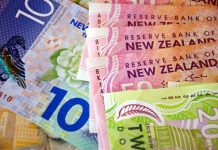Markets
US payrolls delivered once more in May. The Bureau of Labour Statistics reported a 339k net job gain for May. Payrolls beat consensus by a wide margin (237k!!), also taking into account upward revisions to the March and April data (+93k). The employment increase was nevertheless at odds with a significant increase in the unemployment rate (5.7% from 5.4% despite stable participation rate) with the latter being derived from the separate Household Survey which pointed at a >300k net job… loss in May! Average hourly earnings came in as expected at 0.3% M/M (4.3% Y/Y). Markets had to digest the numbers coming from a week long dovish repositioning after future Fed vicechair Jefferson and voting Fed Harker pulled the plug on a June rate hike. It’s skip and go when it comes to them and probably the majority within the Fed. Markets now fully discount a 25 bps July rate hike while the odds of the US central bank hiking already next week are further reduced. US yields rose by 7.3 bps (30-yr) to 15.8 bps (2-yr) in a daily perspective. US Treasuries underperformed German Bunds with German yields closing 3.3 bps (30-yr) to 9.5 bps (2-yr) higher. The dollar profited from the rate support, but as for US yields, last week’s highs were untested. The trade-weighted dollar (DXY) closed at 104.02 from 103.56 and a May high at 104.70. EUR/USD closed at 1.0708 from 1.0762 and compared to the May low of 1.0635. US stock markets didn’t bother the higher US interest rates as the ongoing labour market strength once again underpins the resilience of the economy. Key indices closed 1% (Nasdaq) to 2% (Dow) higher. Talk that China weighs new property spending to help the economy benefited risk sentiment as well. Asian risk sentiment remains bullish this morning with China underperforming despite a strong services PMI. Higher oil prices (see below) offer part of the explanation. They weigh on core bonds as well.
Today’s agenda contains US non-manufacturing ISM. We expect the global divergence between weakness in manufacturing and strength in domestic services to persist in the US as well. This should avoid a nasty, negative surprise. The eco calendar contains second tier eco data this week with US and European central bankers in their blackout period ahead of key policy meetings next week. This sets the stage for more sideways action with May highs in US rates and the dollar being important resistance levels. We keep a close eye at US Treasury funding statements/action as well. They ran down their general account at the Fed to a rock-bottom $23bn against the background of the debt ceiling debate and have to replenish in coming weeks/months.
News and views
At the OPEC+ meeting on Sunday in Vienna, Saudi Arabia announced that it will cut its production by 1 mln barrels per day as the country aims to stabilize the market, amid persistent downward pressure on the oil price. Other members of the group didn’t engage to a further reduction, but agreed to maintain current cuts till the end of 2024. Russia also didn’t commit to deeper cuts. The United Arab Emirates even are allowed a higher production quotum for 2024. The oil price this morning gains modestly with Brent trading close to $77/b.
Rating agency S&P kept the French AA credit rating unchanged on Friday. The outlook remains negative. The agency expects tighter financial conditions and high core inflation to restrain the country’s activity in 2023 and 2024. It expects France’s budget deficit to decline to 3.8% of GDP in 2026 from about 5% in 2023. Government debt is expected to stay above 110% of GDP, with the forecasts still subject to risks related to growth and the implementation of the government’s economic and fiscal policy. Rating agency Fitch affirmed its AA- UK rating and also kept a negative outlook. The agency expects the UK general government debt to GDP ratio to reach 104.8% of GDP by 2024 from 101% in 2022. The negative outlook signals macroeconomic challenges, including weak growth and suborn inflation, higher borrowing costs and expenditure pressures due to the cost of living crisis and the upcoming elections. Fitch expects the UK to enter a mild recession in 2023 with a 0.1% contraction of GDP in 2023 and a weak recovery of 1.0% in 2024. Finally, Fitch kept the US AAA credit rating on watch negative, even after the political agreement to raise to US debt ceiling, avoiding a default as the rating agency will ‘consider the full implications of the most recent brinkmanship episode and the outlook for medium-term fiscal and debt trajectories’.












